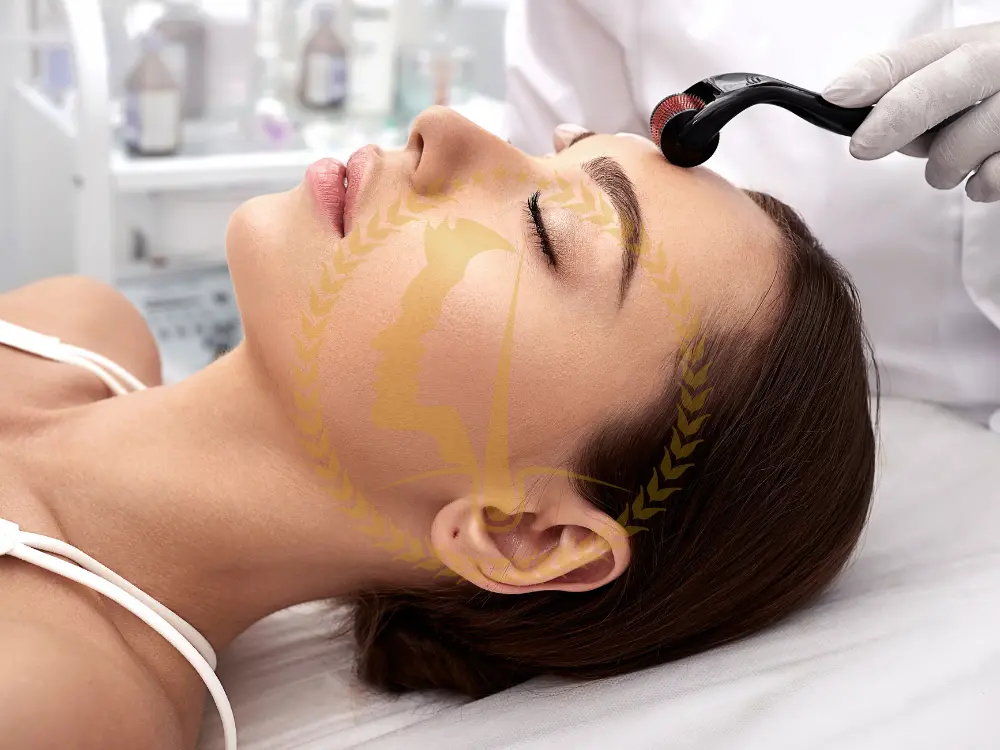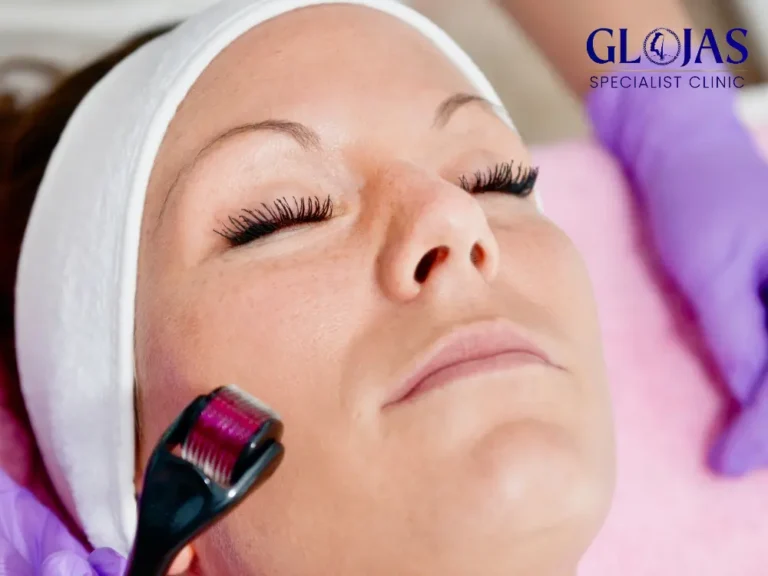Skin pigmentation is a common concern that affects individuals across the globe. Whether it’s caused by sun exposure, hormonal changes, or aging, uneven skin tone can be frustrating. Fortunately, there are several proven ways to address skin pigmentation, one of which is using a dermaroller—a tool that has gained popularity for its ability to improve skin texture and tone. In this article, we’ll explore the causes of skin pigmentation and discuss the top treatments, including how dermarollers can help.
The video features a patient who underwent the MET Light treatment to address uneven skin tone and scars. The patient, a finalist from Miss Universe Malaysia 2020, shares her satisfaction with the results after her first visit, particularly noting improvements in scars caused by eczema. As she looks forward to further sessions, the treatment promises to enhance her skin condition and overall appearance. This video emphasizes the effectiveness of the SMART Laser treatment for pigmentation and skin issues.
What Is Skin Pigmentation?
Skin pigmentation refers to the discoloration or darkening of certain areas of the skin, caused by an overproduction of melanin—the pigment responsible for skin color. This overproduction can result in dark patches, spots, or uneven skin tone, which are commonly seen on the face, hands, and other exposed areas of the body.
Common Types of Skin Pigmentation
- Hyperpigmentation: This occurs when certain areas of the skin become darker than the surrounding skin due to an increase in melanin production. It is commonly caused by sun exposure, inflammation, or hormonal changes.
- Melasma: A form of hyperpigmentation often triggered by hormonal changes, melasma usually appears as large, dark patches on the face. It is more common in women and can be exacerbated by pregnancy or birth control pills.
- Post-Inflammatory Hyperpigmentation (PIH): This type of pigmentation occurs after an injury or inflammation, such as acne, eczema, or a cut. Once the skin heals, it leaves behind a darkened area.
- Age Spots: Also known as liver spots or sunspots, these small, dark patches develop due to prolonged sun exposure and are more common in older adults.

6 Proven Ways to Treat Skin Pigmentation
1. Topical Treatments
Topical creams and serums are one of the most accessible options for treating skin pigmentation. Products that contain ingredients like hydroquinone, retinoids, vitamin C, or kojic acid are often recommended for reducing dark spots. These ingredients work by inhibiting melanin production, promoting skin cell turnover, and brightening the complexion over time.
- Hydroquinone: Known for its skin-lightening properties, hydroquinone is a powerful ingredient for reducing pigmentation. It works by decreasing the production of melanin in the skin.
- Vitamin C: This antioxidant helps brighten the skin by neutralizing free radicals and preventing further damage. It also helps fade existing pigmentation.
2. Chemical Peels
Chemical peels involve applying a chemical solution to the skin, which causes the outer layer to exfoliate and peel away, revealing fresh, evenly toned skin underneath. The strength of the peel can vary depending on the severity of pigmentation, from mild peels using alpha hydroxy acids (AHAs) to stronger peels like trichloroacetic acid (TCA).
Chemical peels are especially effective for treating sunspots, melasma, and superficial hyperpigmentation. Regular peels, when performed by a licensed professional, can significantly improve the appearance of dark spots over time.
3. Laser Therapy
Laser therapy is a more advanced treatment for skin pigmentation, targeting the melanin in the dark spots. Lasers, such as intense pulsed light (IPL) or fractional lasers, work by breaking down the pigment in the skin, which is then absorbed and naturally eliminated by the body. While laser therapy can be highly effective, it may require multiple sessions and can be expensive.

4. Dermaroller for Skin Pigmentation
A dermaroller is a handheld device with tiny needles that create micro-injuries in the skin, stimulating the body’s natural healing process. This process promotes collagen production and accelerates the turnover of skin cells, leading to a smoother and more even complexion.
When it comes to treating skin pigmentation, the dermaroller helps in two ways:
- Improved Absorption of Products: By creating tiny channels in the skin, the dermaroller enhances the absorption of topical treatments like vitamin C or brightening serums, making them more effective.
- Promotes Cell Renewal: The micro-injuries caused by the dermaroller encourage the skin to renew itself, which helps to fade dark spots over time. This method is particularly effective when used alongside other treatments like chemical peels or topical lightening creams.
How to Use a Dermaroller for Skin Pigmentation
Using a dermaroller at home can be safe and effective if done correctly. Here are the steps:
- Cleanse Your Skin: Start by thoroughly cleansing your face to remove any dirt, oil, or makeup.
- Disinfect the Dermaroller: Always disinfect your dermaroller with alcohol before using it on your skin.
- Gently Roll the Device: Roll the dermaroller gently across your skin in all directions—vertical, horizontal, and diagonal—for about 5-10 minutes.
- Apply a Serum: After rolling, apply a brightening serum containing ingredients like vitamin C, niacinamide, or retinol.
- Moisturize and Protect: Finish with a moisturizer and always apply sunscreen, as your skin will be more sensitive to UV rays after using a dermaroller.
For best results, use the dermaroller once a week and always follow with sun protection to avoid further pigmentation.
5. Microdermabrasion
Microdermabrasion is a non-invasive procedure that exfoliates the outer layer of the skin using fine crystals or a diamond-tipped wand. This treatment is particularly effective for superficial pigmentation, such as sunspots or post-inflammatory hyperpigmentation. It helps remove dead skin cells and stimulates collagen production, resulting in a more even skin tone.
6. Sunscreen
Sunscreen is a must-have in any skincare routine, especially for those dealing with skin pigmentation. Sun exposure is one of the leading causes of hyperpigmentation, so protecting your skin from UV rays is essential to prevent further dark spots from forming. Opt for a broad-spectrum sunscreen with at least SPF 30, and reapply every two hours if you’re outdoors.
The Benefits of Dermarolling for Skin Pigmentation
Enhanced Collagen Production
The micro-injuries caused by the dermaroller stimulate collagen and elastin production, which are essential for healthy, youthful-looking skin. Increased collagen helps improve skin texture and tone, reducing the appearance of pigmentation over time.
Cost-Effective Treatment
Dermarollers are a cost-effective solution for improving skin pigmentation compared to more expensive treatments like laser therapy or professional chemical peels. When used consistently and correctly, they can offer noticeable improvements in skin tone without the hefty price tag.
Safe for All Skin Types
Dermarolling is generally safe for all skin types, but it’s important to use the device gently, especially for individuals with sensitive skin. Consulting with a dermatologist before starting any new skin treatment is always recommended.

FAQs About Skin Pigmentation and Dermaroller
1. What causes skin pigmentation?
Skin pigmentation is caused by an overproduction of melanin, often triggered by factors such as sun exposure, hormonal changes, aging, or inflammation from acne and other skin conditions.
2. Is dermarolling safe for treating skin pigmentation?
Yes, dermarolling can be a safe and effective method for treating skin pigmentation when used correctly. It enhances the absorption of brightening products and promotes cell turnover, helping to fade dark spots over time.
3. How often should I use a dermaroller for pigmentation?
It’s recommended to use a dermaroller once a week for skin pigmentation. Always follow up with soothing products and sunscreen, as the skin becomes more sensitive after treatment.
4. Can dermarollers be used with other skin treatments?
Yes, dermarolling can be combined with other skin treatments such as chemical peels, topical creams, or even laser therapy for enhanced results. However, always consult with a dermatologist before combining treatments.
5. How long does it take to see results from dermarolling?
Results from dermarolling vary, but most people notice improvements in skin tone and texture after 4-6 sessions. Consistency is key, so using the dermaroller regularly will yield the best results.
6. Does a dermaroller hurt?
The dermaroller may cause mild discomfort, especially for beginners, but it shouldn’t be painful. Using a numbing cream before rolling can help minimize any discomfort.
